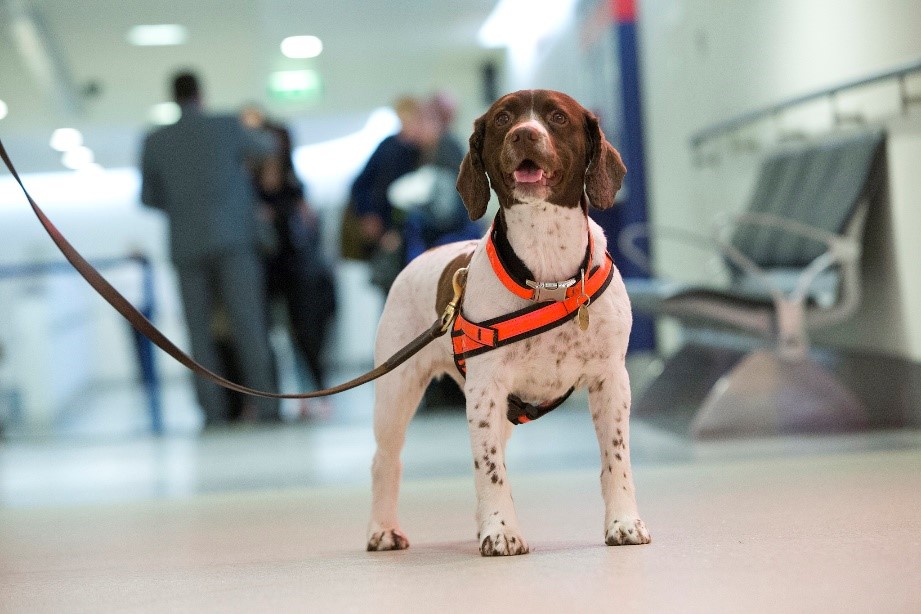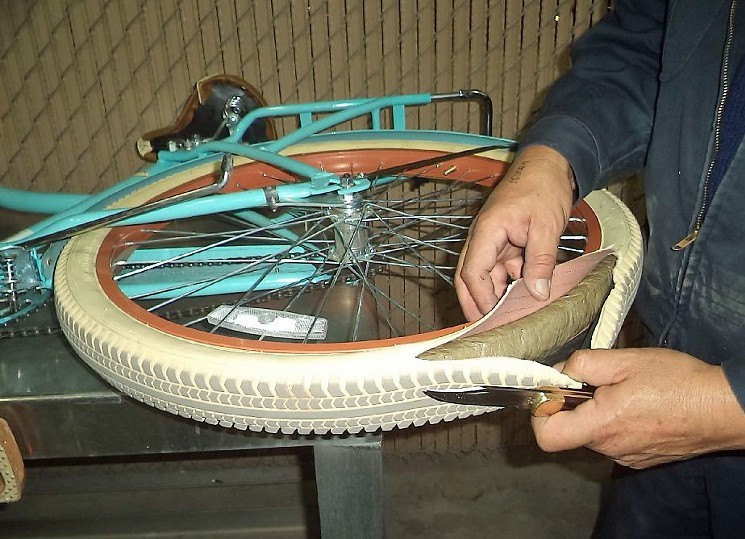Record numbers of people and products moving between countries has meant keeping out contraband has become increasingly challenging. That's why we're using advanced data analytics to help detect potential border security risks posed by travellers, visa applicants, cargo and parcels.
There is a good chance during your travels, you’ve seen this little cutie at the airport:

A sniffer dog at an airport.
Data + sniffer dogs = secure borders
Trained to detect a range of illicit materials – narcotics, plant and animal matter, and weapons – sniffer dogs can discern between different scents even when masked by other odours. There are over 10,000 sniffer dogs patrolling Australia’s borders alone and they have their work cut out for them.
Drug smuggling is big business. In 2016, over 5000 kilos of illicit drugs were detected entering Australia. That’s the same weight as a t-rex! Smugglers are forever coming up with new and inventive ways to move contraband – heroin in bananas, marijuana in bicycle wheels, and firearms welded to lawnmowers.
While it’s only a small proportion of individuals that try to smuggle contraband across borders, record numbers of people and products moving between countries has meant keeping out the unwanted has become increasingly challenging.
Modern monitoring techniques help to tackle this issue. Scanning technologies such as x-rays are used to detect concealed weapons or drugs, however, these can be labour intensive and slow.
Leif Hanlen, from our Data61 team, explains that applying a combination of predictive analytics and machine learning provides a way of finding more needles in haystacks.
“When it’s manual there is only so much information we can sift through. In contrast, by finding patterns and applying machine learning we can automate a lot of mundane tasks and help direct authorities to parcels or containers that are likely to contain illegal substances.”

Man holding bike wheel open showing drugs hidden inside.
Cracking the illegal trade market wide open
So how does this actually work?
If we consider the example of how long it would take someone to analyse the content in a website, a human will likely only be able to look at one or two pages in the same time a computer could look at all of them.
It’s like that handy CRTL + F (find) function on your computer. Hit a couple of keys on the keyboard and you’re taken straight to the section of a 100-something-paged-report, helping you get what you want out of the report without having to read it cover to cover.
By looking at patterns of logistics – where and how a product has made its journey to its destination, where and how long it stopped at particular points – a computer will alert an analyst to suspicious behaviour, requiring further examination.
Dr Hanlen explained, “Computers can take vast quantities of unstructured text, make judgements about where an analyst should be focusing their attention, making the process greatly more efficient.”
Data61 is exploring the application of these techniques in a new partnership with global information technology company, Unisys. Under the partnership, Unisys will fund joint research with Data61 to develop an advanced data analytics solution capable of detecting potential border security risks posed by travellers, visa applicants, cargo and parcels.
“This partnership with Unisys is a great example of Data61 working with industry to turn research and development into innovative commercial products,” explained Dr Hanlen.
There is one thing that remains certain – computers can’t smell as well as dogs…yet. So our furry friends are here to stay.
Want to find out more? Learn how we are using machine learning techniques to make transport networks safer and smarter.

